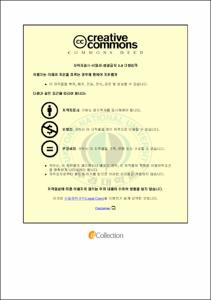벽면 캐비티를 적용한 습식 사이클론의 집진특성
- Alternative Title
- Collection characteristics of wet type cyclone with wall cavity
- Abstract
- The cyclone, one of the conventional air pollution prevention facility, has lots of advantages such as the simple structure, easy to remove high inlet concentration and dealing with the particles in high-temperature gas. However, the cyclone is largely used for pre-treatment due to the low dust collection efficiency and it is difficult to eliminate the fine particles.
The cyclone scrubber can handle large-capacity gas and is the excellent performance in dust collection efficiency and provide gas adsorption and dust collection in a single unit. But the cyclone scrubber has the matter as liquid entrainment and large power consumption because of lots of pressure drop. Although this problem can be prevented by installing the demister in the conventional wet scrubber, the demister should be substituted because it could be closed by particle-phase pollutant.
Therefore, we need the development of wet type cyclone which has no demand in demister installation and replacement and can reduce pressure drop, the volume of waste water treatment and power consumption by using less liquid and cutting down liquid-gas ratio.
We designed the wet type cyclone with wall cavity to utilize the advantages to minimize liquid entrainment and re-scattering of particles, introducing the concept of the 'black box of multi-layer multi-stage porous plate system'.
The main purpose of this study is to investigate a system which can provide high collection and long-term efficiency for fine particles without a demister.
The experiment is carried out to analyze the characteristics of pressure drop and collection efficiency for present system with the experimental parameters such as inlet velocity, water quantity, spray type, particle type.
As a result of studies, it was shown that the pressure of the system was 33 mmH2O (dry type), and 35 mmH2O (water spray 200 mL/min) at inlet velocity 21 m/s. There was little increase of pressure drop according to spray water, but it was a very small pressure drop compared to the existing cyclone scrubber (over 100 mmH2O).
The collection efficiencies of fly ash was 96.1% (spray water 100 mL/min), 96.8% (spray water 200 mL/min) at inlet velocity 21 m/s. And the removal efficiencies of SO2 was 62.5% (water spray 100 mL/min), 75% (water spray 200 mL/min) at inlet velocity 6 m/s.
This system has high collection efficiency and it was able to collect dust and remove gaseous pollutants at the same time without installing a demister at low pressure drop and liquid-gas ratio.
- Issued Date
- 2014
- Awarded Date
- 2014. 2
- Type
- Dissertation
- Publisher
- 부경대학교
- Alternative Author(s)
- Jun-Hyeong Kwon
- Affiliation
- 대학원
- Department
- 대학원 환경공학과
- Advisor
- 여석준
- Table Of Contents
- 목 차
목 차 Ⅰ
그림차례 Ⅲ
표 차례 Ⅴ
Abstract Ⅵ
Ⅰ. 서론 1
Ⅱ. 이론적 배경 3
1. 사이클론(Cyclone) 3
1.1. 사이클론(Cyclone)의 원리 3
1.1.1. 사이클론(Cyclone)의 성능특성 3
1.2. 사이클론의 종류 8
1.3. 사이클론의의 특징 9
2. 세정 집진장치(Wet Scrubber) 10
2.1. 세정 원리 10
2.1.1. 직접차단(Interception) 10
2.1.2. 관성충돌(Inertial impaction) 11
2.1.3. 확산작용(Diffusion) 12
2.1.4. 응집작용 14
2.2. 세정 집진장치 종류 15
2.3. 세정 집진장치의 특징 17
3. 침투도(Penetration) 20
Ⅲ. 실험장치 및 방법 25
1. 실험장치 25
1.1. 벽면 Cavity를 적용한 습식 사이클론 26
1.1.1. Spray hole의 위치 28
1.1.2. Flow current 29
1.2. 분진 공급장치 30
1.3. 흡입 송풍기 30
1.4. 가스 주입장치 30
1.5. Particle Counter 측정기
(GRIMM Aerosol Dust Monitor & Counters) 30
1.6. 휴대용 연소가스 측정기(Portable Flue Gas Analyzer, E8500) 31
2. 실험용 분진 32
3. 실험 방법 35
3.1. 압력손실 특성 36
3.2. 집진효율 특성 36
Ⅳ. 실험결과 및 고찰 37
1. 압력손실 특성 37
1.1. 압력손실 37
1.1.1. 압력손실 특성 38
2. 입자상 오염물질의 집진효율 특성 40
2.1. 벽면 Cavity를 적용한 사이클론의 집진효율 특성 40
2.1.1. 유입유속에 따른 집진효율 특성 40
2.1.2. 입구농도에 따른 집진효율 특성 43
2.1.3. 분진 종류에 따른 집진효율 특성 44
2.2. 벽면 Cavity를 적용한 습식 사이클론의 집진효율 특성 45
2.2.1. 물 분사량 변화 및 유입유속 증가에 따른 집진효율 특성 45
2.2.2. 물 분사방식에 따른 집진효율 특성 48
2.2.3. 분진종류에 따른 집진효율 특성 49
3. 가스상 오염물질의 제거효율 특성 50
3.1. 유입유속에 따른 SO2 제거효율 특성 50
3.2. 물 분사량에 따른 SO2 제거효율 특성 52
Ⅴ. 결론 53
참고문헌 55
- Degree
- Master
- Files in This Item:
-
-
Download
 벽면 캐비티를 적용한 습식 사이클론의 집진특성.pdf
기타 데이터 / 1.35 MB / Adobe PDF
벽면 캐비티를 적용한 습식 사이클론의 집진특성.pdf
기타 데이터 / 1.35 MB / Adobe PDF
-
Items in Repository are protected by copyright, with all rights reserved, unless otherwise indicated.